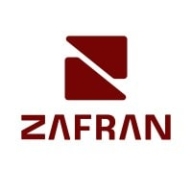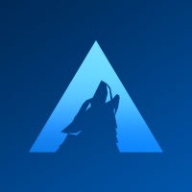


Microsoft Defender for Cloud and Arctic Wolf Managed Risk are products in the cybersecurity domain. Arctic Wolf Managed Risk stands out with superior features and value.
Features: Microsoft Defender for Cloud delivers security posture management, threat protection, and hybrid cloud workload guardrails. Arctic Wolf Managed Risk offers advanced threat detection, response capabilities, and specialized vulnerability management, emphasizing intelligence-driven services.
Room for Improvement: Microsoft Defender for Cloud may face integration challenges outside Azure. Arctic Wolf Managed Risk could enhance its solution capabilities, provide more comprehensive support, and improve user interface for easier navigation.
Ease of Deployment and Customer Service: Arctic Wolf Managed Risk features a straightforward deployment model and attentive service. Microsoft Defender for Cloud is well-suited for Azure but may present setup challenges outside this environment, despite robust support.
Pricing and ROI: Microsoft Defender for Cloud is competitively priced for Azure-based environments, offering a compelling ROI. Arctic Wolf Managed Risk, while potentially higher in initial cost, ensures a worthwhile ROI with its enhanced security intelligence and tailored services, offering significant risk mitigation value.
| Product | Market Share (%) |
|---|---|
| Microsoft Defender for Cloud | 5.1% |
| Zafran Security | 1.0% |
| Arctic Wolf Managed Risk | 1.2% |
| Other | 92.7% |



| Company Size | Count |
|---|---|
| Small Business | 6 |
| Midsize Enterprise | 3 |
| Company Size | Count |
|---|---|
| Small Business | 26 |
| Midsize Enterprise | 7 |
| Large Enterprise | 45 |
Zafran Security integrates with existing security tools to identify and mitigate vulnerabilities effectively, proving that most critical vulnerabilities are not exploitable, optimizing threat management.
Zafran Security introduces an innovative operating model for managing security threats and vulnerabilities. By leveraging the threat exposure management platform, it pinpoints and prioritizes exploitable vulnerabilities, reducing risk through immediate remediation. This platform enhances your hybrid cloud security by normalizing vulnerability signals and integrating specific IT context data, such as CVE runtime presence and internet asset reachability, into its analysis. No longer reliant on patch windows, Zafran Security allows you to manage risks actively.
What are the key features of Zafran Security?
What benefits can users expect from Zafran Security?
In industries where security is paramount, such as finance and healthcare, Zafran Security provides invaluable protection by ensuring that only exploitable vulnerabilities are addressed. It allows entities to maintain robust security measures while allocating resources efficiently, fitting seamlessly into existing security strategies.
Delivered by security experts - Concierge Security® Team; the Arctic Wolf® Managed Risk solution enables you to define and contextualize your attack surface coverage across your networks, endpoints, and cloud environments; provides you with the risk priorities in your environment; and advises you on your remediation actions to ensure that you are benchmarking against configuration best practices and continually hardening your security posture.
Microsoft Defender for Cloud is a comprehensive security solution that provides advanced threat protection for cloud workloads. It offers real-time visibility into the security posture of cloud environments, enabling organizations to quickly identify and respond to potential threats. With its advanced machine learning capabilities, Microsoft Defender for Cloud can detect and block sophisticated attacks, including zero-day exploits and fileless malware.
The solution also provides automated remediation capabilities, allowing security teams to quickly and easily respond to security incidents. With Microsoft Defender for Cloud, organizations can ensure the security and compliance of their cloud workloads, while reducing the burden on their security teams.
We monitor all Vulnerability Management reviews to prevent fraudulent reviews and keep review quality high. We do not post reviews by company employees or direct competitors. We validate each review for authenticity via cross-reference with LinkedIn, and personal follow-up with the reviewer when necessary.